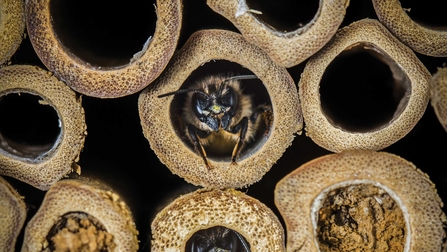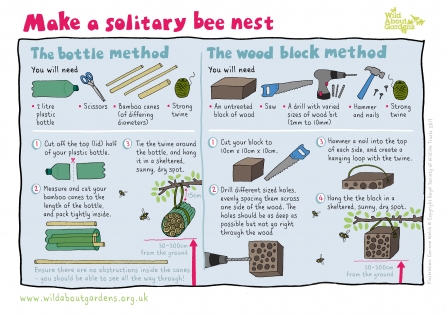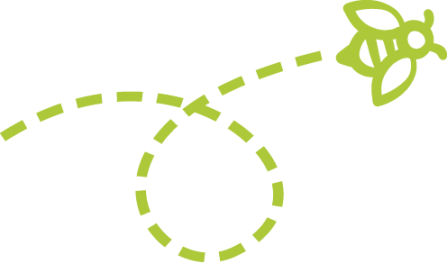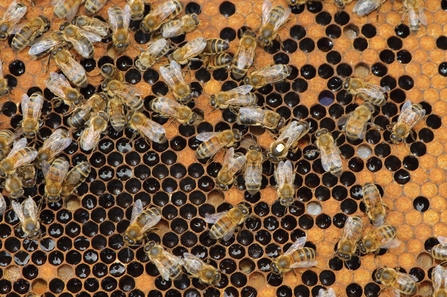Turn your patch into a pollinator paradise!
Bees and other pollinators are vital to growing many of our favourite produce and provide us with every third mouthful of food that we eat

Get your allotment buzzing
Over half of UK bee species have declined in the last 50 years
A lack of food and places for bees to nest, along with climate change and the over use of chemicals, has been devastating for bees. We must take action to ensure our bees survive.
Foods pollinated by bees and other insects
|
Strawberries |
Squash |
|
Blueberries |
Aubergine |
|
Raspberries |
Broad beans |
|
Apples |
Basil |
|
Tomatoes |
Coriander |
|
Pears |
Cucumber |
|
Courgettes |
Pumpkin |
Feed your bees
Grow lots of nectar & pollen rich flowers. Include herbs and fruit bushes on your plot, as well as single flowered annuals such as cornflowers, nasturtiums, pot marigolds, borage, cosmos and sunflowers.
If you have space on the allotment site, create an attractive wildflower area.
It’s thirsty work
With permission, build a wildlife pond or provide a shallow dish of water for bees and other wildlife to drink from. A pond will also attract useful predators such as frogs and dragonflies to deal with pests.
Locate the pond in a flat, sunny spot, away from overhanging trees and include shallow edges for easy access.
Grow wild!
Plant a native hedgerow around the edge of your allotment site.
Attract wildlife with a variety of hedge species such as hawthorn, blackthorn, hazel, field maple, dogwood, crab apple and dog rose.
When in bloom, these plants produce many flowers, enabling bees to collect food without wasting energy on flying.
Cut out the chemicals
They are toxic to wildlife, especially bees, hedgehogs, birds and frogs!
Instead use slug killing nematodes and companion planting techniques. Hand remove aphids and slugs.
Home sweet home
Build a solitary bee hotel. Drill holes 2-10mm wide in dry logs or blocks of wood or tie together bundles of hollow plant stems with twine. Place them in a sunny spot at chest height.
Any bees that move in will use them for up to eleven months as they develop from eggs to adults.

Pollinator checklist
Is your allotment the bees knees?
Have you got these vital bee friendly features on your allotment?
Bird, bat and hedgehog boxes
Chemical and pesticide free
Fruit bushes or small orchard
Peat-free compost
Nectar rich flowers
Wildflower patch
Climbing plants
Herb bed
Native hedge
Solitary bee hotel
Log and stone pile
Wildlife pond
Bird bath
Compost heap

Did you know that tomatoes need large bodied bumblebees to buzz-polinate them by vibrating the flowers to release the pollen


There are over 240 species of bees in the UK
There is only 1 honey bee species:
They produce honey and live in hives of up to 20,000 individuals.
There are 25 bumblebee species:
These are social insects which nest in colonies; underground in old mammal nests or in dense vegetation, compost heaps or in old bird nests.
There are an amazing 224 species of solitary bees and they come in many colours, shapes and sizes
Red mason bees:
These are solitary bees that nest in a range of natural holes, using mud to seal off each egg chamber. They pollinate fruit trees.
Leaf cutter bees:
Leaf cutters are also solitary bees. They cut discs out of leaves to build the 'cells' in which their larvae live. They also pollinate fruit and vegetables.



